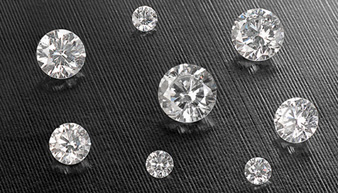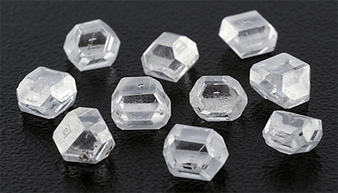Solitaire white diamonds
In the 1990’s, the technology to grow bigger diamonds of 3+ carat size was developed in Russia. The newly developed HPHT (high pressure, high temperature) presses were capable of reaching up to 60,000 bar pressures and 2,000°C temperatures, to simulate the magmatic reactions inside the earth that created mined diamonds. It takes 5-8 days to grow a solitaire diamond, which otherwise takes millions of years in the earth’s mantle.
Lab-grown diamonds are eco-friendly and conflict-free, unlike mined diamonds. They have identical physical, chemical and optical properties. They are also real diamonds composed of pure carbon, but 40 - 50% cheaper than natural diamonds, as they are straight from the factories. Natural diamonds are still smuggled out of conflict zones in Africa and sometimes called ‘blood diamonds’.
Performance comparison of Diamonds |
|||||||
Material |
Formula |
Refractive Index(es) 589.3 nm |
Dispersion |
Hardness (Mohs’ scale) |
Density (g/cm3) |
Thermal Conductivity |
|
Diamond |
Natural Diamond |
C |
2.417 |
0.044 |
10 |
3.52 |
Excellent |
Lab-grown diamond |
C |
2.417 |
0.044 |
10 |
3.52 |
Excellent |
|
 |  |
Nearly colourless rough & polished diamonds created by HPHT process | |
Lab-grown diamonds are virtually indistinguishable from natural diamonds, either by eye or by magnifying scope. They have the same hardness, refractive index, specific gravity and dispersion factors. They are polished using the same equipments and technologies. They have the same brilliance and sparkle & will be certified as lab-grown diamonds by the external laboratories (for example, International Gemological Institute). The only difference is the point of origin.